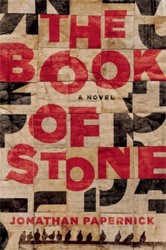The nine short stories in Jonathan Papernick’s new collection veer from startling to crass to surprisingly poignant. Papernick has a dark knack for creating unusual and uncomfortable situations for his protagonists.
The title story features a stand-down between a Jewish day school teacher and a precocious and pugnacious half-Jewish student who dresses up on Purim as an Arab terrorist, asking hard questions of Judaism and threatening to blow up his teacher and fellow students. The story is tense and funny and quite disturbing. It seems a conscious updating of Phillip Roth’s “The Conversion of the Jews” wherein an adolescent boy with similarly tough questions about Judaism that his Rabbi can’t answer also pulls a hyper-dramatic attention- grabbing caper, demanding answers.
In “The Madonna of Temple Beth Elohim” an Iraq war veteran hired to do maintenance for a Reform Temple before the High Holidays sees a vision of the Madonna in the temple. Christians begin making pilgrimages over Rosh Hashana, and the Temple’s Rabbi tries to deal with the debacle and fears having to cancel Yom Kippur services. Much of the humor stems from the initial improbability of the situation, but Papernick tells the story masterfully, and the ending is unexpectedly lovely.
Papernick’s other stories range from that of a miracle birth on a kibbutz of a girl who is born pregnant and remains so until she’s 16; a down and out guy gets a break and makes a play for the streetwalker he has long loved; and a tale of a multi-millionaire who dreams of solving the Palestinian-Israeli conflict by creating a Palestinian baseball league.
The book also contains two pieces of short-short fiction: one about a Jewish teenage girl’s unexpected discomfort at ‘hooking up’ with a non-Jewish boy, and the other about a Jewish skinhead who regrets his Nazi tattoos. Most of Papernick’s characters are like these two: confused, often angry, often hurt outsiders: lonely adolescents or lonely middle-aged men who experience cruelty and sometimes perpetuate cruelty on others. A few of the pieces contain sexually graphic elements. Although on the surface some of Papernick’s stories seem contrived to shock for shock’s sake, there are moments of empathy, tenderness, and hope that shine through even some of the darker stories, and in most instances the tensions and torments he highlights are worth dramatizing, for he’s giving voice to the voiceless.



